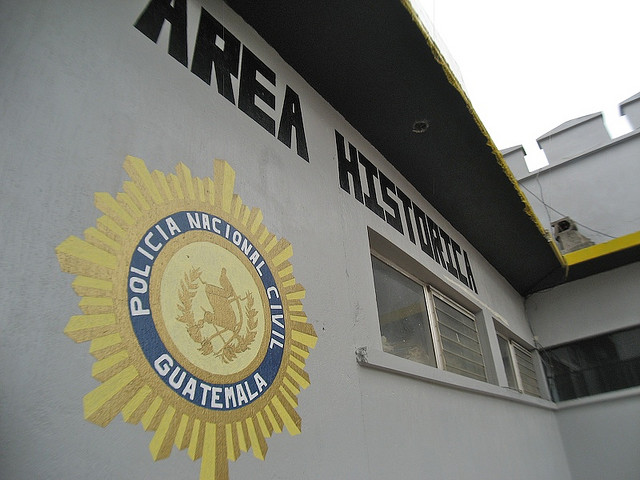“On March 25, Human Rights Ombudsman Sergio Morales' wife, Gladys Monterroso, was abducted by unknown assailants and released some 15 hours later after she was beaten and raped. Early indications suggested that the kidnapping may have been intended to intimidate Morales into backing off of his efforts to highlight and investigate human rights violations committed during Guatemala's internal conflict. Specifically, the attack could have been designed to stop him from making public sensitive records from the Historic National Police Archives. This potential link led the International Commission Against Impunity in Guatemala (CICIG) to take on the investigation.”
Date: 06/08/2009
Refid: 09GUATEMALA539
Origin: Embassy Guatemala
Released: 30/08/2011
http://wikileaks.org/cable/2009/06/09GUATEMALA539.html
This story has continued, with, fortunately, very positive results. And it reveals much to us about the nature of evidence en masse – how large collections of records can be necessary if we are to fully understand the systems and governance that supports the actions of abusive or just societies.
Having discovered this trove of police records in 2005, Guatemalan human rights investigators established the Project to Recover the Historic Archives of the National Police. The project had, by October 2009, digitised eight million documents from the archive, and cleaned and organized another four million.

Photo credit:
Xeni's photostream
The archive contains vital evidence of police participation in disappearances and assassinations during Guatemala’s 36-year civil war, which ended in 1996. Previously human rights advocates and others had sought to hold police and government officials to account but had rarely been successful because of a lack of evidence.
“In this country, it has become dangerous to remember," says Gustavo Meoño, director of the archive project. There has been at least one attempt to firebomb the archive. Not everyone is eager to dig up the recent past, especially police—some still serving on active duty—who could be implicated in crimes. But at the very least, the researchers hope to give closure to victims' relatives and survivors. "If you have an official document that proves what you've been saying is true," Villagran says, "it's more difficult for anyone to say that you're lying about what happened to you, your family and the ones you loved." (From Julian Smith, A Human Rights Breakthrough in Guatemala, Smithsonian magazine, October 2009 http://www.smithsonianmag.com/history-archaeology/Digs-Paper-Trail.html)
As well as the ability to trace specific cases of disappearances and murders, as the details of daily reports and operational orders accumulated in the database, a larger picture emerged, allowing investigators to understand how the National Police functioned as an administration. For the investigators, this raised questions that were as much about the organisation of oppression and abuses as they were about individual cases: Did the police get their orders directly from military intelligence or senior officials within the police force? Did mid-level officials give the orders without consulting superiors? Or did individual police officers commit these acts on their own initiative? Only by seeing the body of records as a whole is it possible to fully comprehend the answers to these bigger picture questions.
It is interesting to consider this ability to analyse large sets of records to identify the conditions that are conducive to abuses of power in light of the large records releases by WikiLeaks. Often called, disparagingly, ‘document dumps’, or criticised for a lack of focus or specificity (as by Australian Prime Minister Julia Gillard on the Australian ABC TV Q&A program when asked for her views on WikiLeaks as a whistleblower’s platform), records such as the diplomatic cables must be revealed as an interconnected whole if they are to serve as robust evidence of the global actors whose activities they document.
This importance of relationships and context is well known to archivists, who strive to preserve recordkeeping systems with all of their interdependencies, rather than seeking to artificially construct stories from them. By retaining the totality of the recordkeeping process and its products, the full impact of the evidence can be felt. Whether a whistleblower thinks that a single document or an entire recordkeeping system is required to correct the public historical record is surely simply a matter of scale and not a question on which others, such as publishers, should intervene or impose their judgement.
The information in the Guatemalan Historic National Police Archives helps investigators analyse the evolution of Guatemala's police institutions and determine how civil authorities drift into extra-judicial acts of violence. Surely analysis across the WikiLeaks releases can similarly help us to understand the patterns, governance and information flows that have shaped our society for good or ill.
Theme by Danetsoft and Danang Probo Sayekti inspired by Maksimer